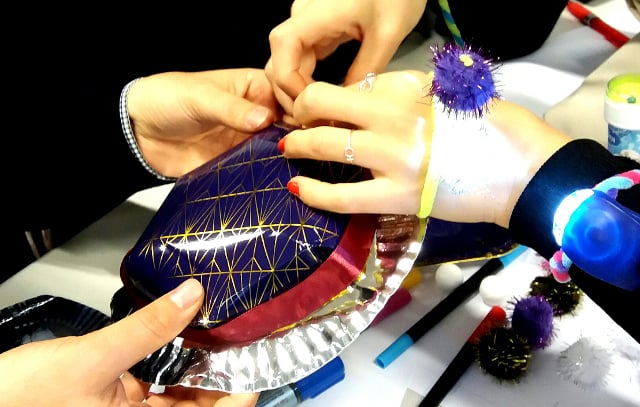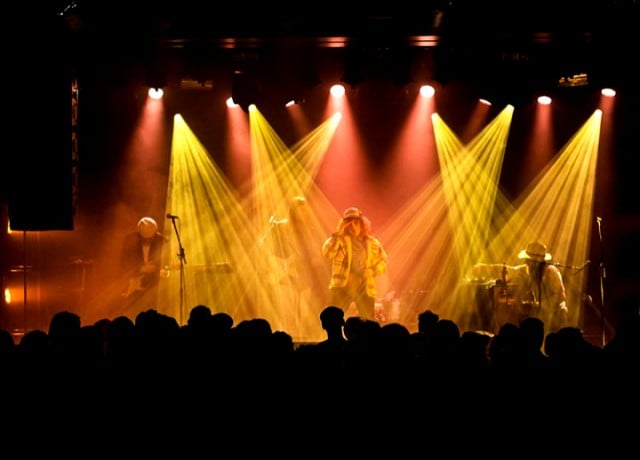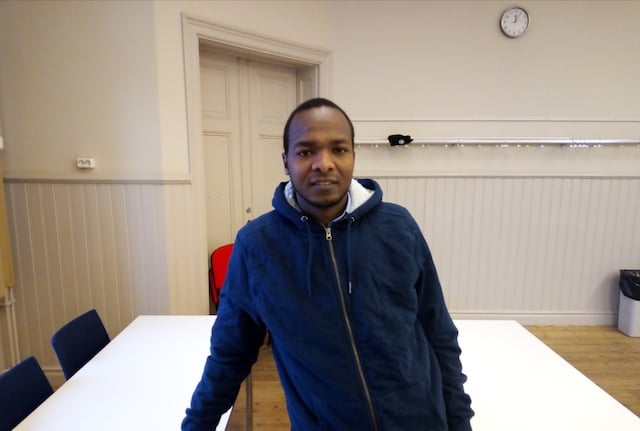Stockholm is one of the most vibrant cities in Europe, with its diversity, innovation and growth opportunities for business and individuals. Fascinated by this I chose this city to pursue my master's degree and live for the next two years.
I am happy that in my first month here, thanks to the Network of Future Global Leaders, I was able to attend the first Gather Festival. And in just three days I saw and experienced all aspects of Stockholm in the most spectacular way possible.
So, on the morning of September 14th, I took the green metro line to go to Nobelberget. That day happened to be also my birthday. I was so excited that this year on my special day I could do one of my favorite things in the world: learn and network.
The festival started with a unique and breathtaking opening ceremony. Poetry to make us Question; a laser show about what really means to Collaborate; and meditation as an inspiration to Think Different – which were the pillars of Gather Festival. Everything came together perfectly and prepared us for some mind-shifting speeches and labs.
Gather Festival revolved around five different themes: Human vs. Machine; Communication; Economy; Urban Development; Democracy. All themes are the core of Stockholm innovation and you could really feel this from the local speakers but also from the admiration the international speakers had for this city.
They ran in parallel with each other and with the G:Labs. This made it very difficult to decide which themes and speakers to follow, but I tried to get a bit of everything (okay, maybe a bit more about Human vs. Machine, but I am tech girl, I cannot help it).

The speakers were incredible, not only because of the knowledge they shared (which was immense) but especially because of the way they made us feel and think in relation to the ideas they discussed. I will never forget Lucy McRay and Kate Stone from the keynote speeches; nor Johanna Öhlén Meschke andw Anja Melander — cofounders of social design firm Tankeapoteket — from the G:Labs.
Which leads me to maybe my favorite thing of all the experience: the G:Labs.
I was one of the lucky ones that were able to book a seat at The Future of Sustainable Fashion by Swedish Institute. As someone who is not very interested in fashion I was not convinced I had made the right selection but I challenged myself to go outside my comfort zone and learn about something different this time. I knew Swedish people were famous for being stylish, so I thought why not discover what their secret is.
As always, outside the comfort zone is where the magic happens. There I had the most amazing three hours of the festival. I learned so many interesting things – from the circular economy that is crucial for sustainable fashion, to the mind-blowing technique on how to grow fabric in your kitchen. We even worked on creating our own sustainable fashion prototype, which was one of the most fun experiences ever.
I also had the chance to meet and work with some interesting people from different backgrounds and especially from the fashion industry. And of course, I experienced the cultural diversity that I see everywhere in Sweden: my team had members from Sweden, Columbia, Vietnam, and Albania (me). Every time I shop at H&M from now on, I will be excited because I know one of their employees in the buying department, that decides which clothes to select for their collections.

Last but not least, every night after the conference was the Music Festival. In different locations around the city, different stages featured different artists. We could learn during the day from the Night Mayor of Amsterdam about the Nighttime Economy and experience during the night how electric it is in Stockholm. I must highlight my excitement that thanks to the festival I had the chance to listen for the first time Amanda Bergman, an incredible artist with an enchanting voice.
I will finish this reflection with the most important aspect of Stockholm that I experienced at Gather: the energy. The energy that flows in this city is incredible. It is powerful and intense, making you run every day to work hard, question everything, collaborate, and think different – which leads to innovation and growth. At the same time, it is soft and quiet, keeping that peaceful state everybody feels and enjoys while visiting or living in Stockholm, the beautiful capital of Scandinavia.
Enkeleda Ibrahimi is studying Information Security at Stockholm University.



 Please whitelist us to continue reading.
Please whitelist us to continue reading.